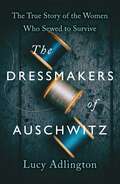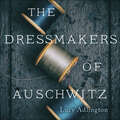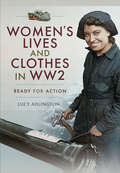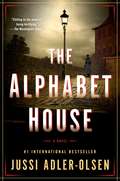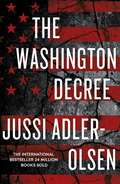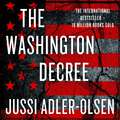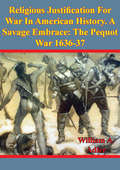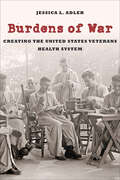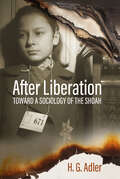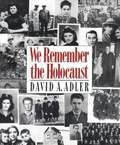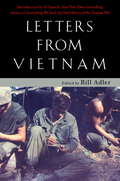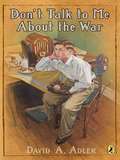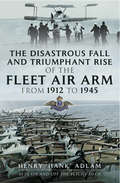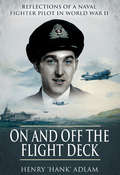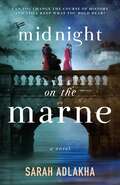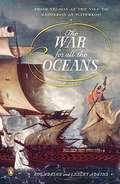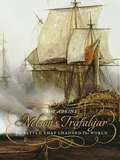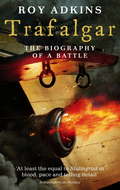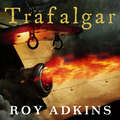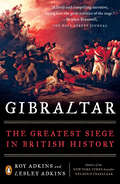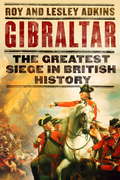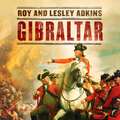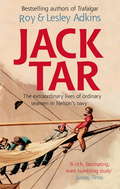- Table View
- List View
The Dressmakers of Auschwitz: The True Story of the Women Who Sewed to Survive
by Lucy Adlington'Lucy Adlington tells of the horrors of the Nazi occupation and the concentration camps from a fascinating and original angle. She introduces us to a little known aspect of the period, highlighting the role of clothes in the grimmest of societies imaginable and giving an insight into the women who stayed alive by stitching' - Alexandra Shulman, author of Clothes...and other things that matter'An utterly absorbing, important and unique historical read' - Judy Batalion, NY Times bestselling author of The Light of Our Days: The Untold Story of Women Resistance Fighters in Hitler's GhettosThe powerful chronicle of the women who used their sewing skills to survive the Holocaust, stitching beautiful clothes at an extraordinary fashion workshop created within one of the most notorious WWII death camps. At the height of the Holocaust twenty-five young inmates of the infamous Auschwitz-Birkenau concentration camp - mainly Jewish women and girls - were selected to design, cut, and sew beautiful fashions for elite Nazi women in a dedicated salon. It was work that they hoped would spare them from the gas chambers. This fashion workshop - called the Upper Tailoring Studio - was established by Hedwig Höss, the camp commandant's wife, and patronized by the wives of SS guards and officers. Here, the dressmakers produced high-quality garments for SS social functions in Auschwitz, and for ladies from Nazi Berlin's upper crust. Drawing on diverse sources - including interviews with the last surviving seamstress - The Dressmakers of Auschwitz follows the fates of these brave women. Their bonds of family and friendship not only helped them endure persecution, but also to play their part in camp resistance. Weaving the dressmakers' remarkable experiences within the context of Nazi policies for plunder and exploitation, historian Lucy Adlington exposes the greed, cruelty, and hypocrisy of the Third Reich and offers a fresh look at a little-known chapter of World War II and the Holocaust.
The Dressmakers of Auschwitz: The True Story of the Women Who Sewed to Survive
by Lucy AdlingtonThe powerful chronicle of the women who used their sewing skills to survive the Holocaust, stitching beautiful clothes at an extraordinary fashion workshop created within one of the most notorious WWII death camps. At the height of the Holocaust twenty-five young inmates of the infamous Auschwitz-Birkenau concentration camp - mainly Jewish women and girls - were selected to design, cut, and sew beautiful fashions for elite Nazi women in a dedicated salon. It was work that they hoped would spare them from the gas chambers. This fashion workshop - called the Upper Tailoring Studio - was established by Hedwig Höss, the camp commandant's wife, and patronized by the wives of SS guards and officers. Here, the dressmakers produced high-quality garments for SS social functions in Auschwitz, and for ladies from Nazi Berlin's upper crust. Drawing on diverse sources - including interviews with the last surviving seamstress - The Dressmakers of Auschwitz follows the fates of these brave women. Their bonds of family and friendship not only helped them endure persecution, but also to play their part in camp resistance. Weaving the dressmakers' remarkable experiences within the context of Nazi policies for plunder and exploitation, historian Lucy Adlington exposes the greed, cruelty, and hypocrisy of the Third Reich and offers a fresh look at a little-known chapter of World War II and the Holocaust.(P) 2021 Hodder & Stoughton Limited
Women's Lives and Clothes in WW2: Ready for Action
by Lucy AdlingtonAn illustrated history of World War II-era women&’s fashions, featuring ladies from all nations involved in conflict. What would you wear to war? How would you dress for a winter mission in the open cockpit of a Russian bomber plane? At a fashion show in Occupied Paris? Singing in Harlem, or on fire watch in Tokyo? Women&’s Lives and Clothes in WW2 is a unique, illustrated insight into the experiences of women worldwide during World War II and its aftermath. The history of ten tumultuous years is reflected in clothes, fashion, accessories, and uniforms. As housewives, fighters, fashion designers, or spies, women dressed the part when they took up their wartime roles. Attractive to a general reader as well as a specialist, Women&’s Lives and Clothes in WW2 focuses on the experiences of British women, then expands to encompass every continent affected by war. Woven through all cultures and countries are common threads of service, survival, resistance, and emotion. Historian Lucy Adlington draws on interviews with wartime women, as well as her own archives and costume collection. Well-known names and famous exploits are featured—alongside many never-before-told stories of quiet heroism. You&’ll indulge in luxury fashion, bridal ensembles, and enticing lingerie, as well as thrifty make-do-and-mend. You&’ll learn which essential garments to wear when enduring a bomb raid and how a few scraps of clothing will keep you feeling human in a concentration camp. Women's Lives and Clothes in WW2 is richly illustrated throughout, with many previously unpublished photographs, 1940s costumes, and fabulous fashion images. History has never been better dressed.
The Alphabet House
by Jussi Adler-OlsenIn the tradition of Alan Furst, the #1 international bestselling author delivers his first stand-alone novel, a psychological thriller set in World War II Nazi Germany and 1970s England British pilots James Teasdale and Bryan Young have been chosen to conduct a special photo-reconnaissance mission near Dresden, Germany. Intelligence believes the Nazis are building new factories that could turn the tide of the war. When their plane is shot down, James and Bryan know they will be executed if captured. With an enemy patrol in pursuit, they manage to jump aboard a train reserved for senior SS soldiers wounded on the eastern front.In a moment of desperation, they throw two patients off the train and take their places, hoping they can escape later. But their act is too convincing and they end up in the Alphabet House, a mental hospital located far behind enemy lines, where German doctors subject their patients to daily rounds of shock treatments and experimental drugs. The pilots' only hope of survival is to fake insanity until the war ends, but their friendship and courage are put to the ultimate test when James and Bryan realize they aren't the only ones in the Alphabet House feigning madness.Millions of fans around the world--and in this country--know Adler-Olsen for his award-winning Department Q series. His first stand-alone, The Alphabet House, is the perfect introduction for those who have yet to discover his riveting work.
The Washington Decree
by Jussi Adler-OlsenThe New York Times and #1 internationally bestselling author of the Department Q series is back, with a terrifyingly relevant stand-alone novel about an America in chaos. THE NO. 1 INTERNATIONAL BESTSELLING AUTHOR24 MILLION BOOKS SOLDWINNER OF THE GLASS KEY AWARD"The president has gone way too far. . . . These are practically dictatorial methods we're talking about." When Democratic Senator Bruce Jansen is elected president of the United States, it is a personal victory for Dorothy "Dottie" Rogers. She has secured a job in the White House, has proved to her Republican father that she was right to support Jansen, and is proud to see the rise of an intelligent, inspiring leader who shares her ideals. But the triumph is short-lived: Jansen's pregnant wife is assassinated on election night, and the alleged mastermind behind the shooting is none other than Dottie's own father. When Jansen ascends to the White House, he is a changed man, determined to end gun violence by any means necessary. Rights are taken away as quickly as weapons. Checkpoints and roadblocks destroy infrastructure. The media is censored. Militias declare civil war on the government. The country is in chaos, and Dottie's finds herself fighting for the life of her father, who just may be innocent.
The Washington Decree
by Jussi Adler-OlsenThe New York Times and #1 internationally bestselling author of the Department Q series is back, with a terrifyingly relevant stand-alone novel about an America in chaos. THE NO. 1 INTERNATIONAL BESTSELLING AUTHOR24 MILLION BOOKS SOLDWINNER OF THE GLASS KEY AWARD"The president has gone way too far. . . . These are practically dictatorial methods we're talking about." When Democratic Senator Bruce Jansen is elected president of the United States, it is a personal victory for Dorothy "Dottie" Rogers. She has secured a job in the White House, has proved to her Republican father that she was right to support Jansen, and is proud to see the rise of an intelligent, inspiring leader who shares her ideals. But the triumph is short-lived: Jansen's pregnant wife is assassinated on election night, and the alleged mastermind behind the shooting is none other than Dottie's own father. When Jansen ascends to the White House, he is a changed man, determined to end gun violence by any means necessary. Rights are taken away as quickly as weapons. Checkpoints and roadblocks destroy infrastructure. The media is censored. Militias declare civil war on the government. The country is in chaos, and Dottie's finds herself fighting for the life of her father, who just may be innocent.
Religious Justification For War In American History. A Savage Embrace: The Pequot War 1636-37
by William A. AdlerThis thesis examines the ideological justification and conduct of the Pequot War (1636-1637) in Southern New England. It will address as a central issue the role religion played for the English in shaping their response to the challenges of colonization and resistance from indigenous tribes. The first chapter will serve as an introduction to the topic. Chapter's two and three will describe the events prior to and including the conflict in detail. Chapter four will discuss the religious underpinning of Puritan thought and policy. Chapter five will examine the military factors that made the destruction of the Pequot both possible and all but inevitable. Chapter six will conclude the examination and highlight the continued relevance of religion as a shaping force for policy and war.
Narratives of War: Remembering and Chronicling Battle in Twentieth-Century Europe (Memory and Narrative)
by Nanci Adler Remco Ensel Michael WintleNarratives of War considers the way war and battle are remembered and narrated across space and time in Europe in the twentieth century. The book reflects on how narratives are generated and deployed, and on their function as coping mechanisms, means of survival, commemorative gestures, historical records and evidence. The contributions address such issues as the tension and discrepancy between memory and the official chronicling of war, the relationship between various individuals’ versions of war narratives and the ways in which events are brought together to serve varied functions for the narrators and their audiences. Drawing upon the two World Wars, the Spanish Civil War and the ex-Yugoslav wars, and considering narrative genres that include film, schoolbooks, novels, oral history, archives, official documents, personal testimony and memoirs, readers are introduced to a range of narrative forms and examples that highlight the complexity of narrative in relation to war. Approached from a multidisciplinary perspective, and taken together, analysis of these narratives contributes to our understanding of the causes, experience, dynamics and consequences of war, making it the ideal book for those interested in twentieth-century war history and the history of memory and narrative.
Burdens of War: Creating the United States Veterans Health System (Reconfiguring American Political History)
by Jessica L. AdlerHow have Americans grappled with the moral and financial issues of veterans’ health care?In the World War I era, veterans fought for a unique right: access to government-sponsored health care. In the process, they built a pillar of American social policy. Burdens of War explores how the establishment of the veterans’ health system marked a reimagining of modern veterans’ benefits and signaled a pathbreaking validation of the power of professionalized institutional medical care.Adler reveals that a veterans’ health system came about incrementally, amid skepticism from legislators, doctors, and army officials concerned about the burden of long-term obligations, monetary or otherwise, to ex-service members. She shows how veterans’ welfare shifted from centering on pension and domicile care programs rooted in the nineteenth century to direct access to health services. She also traces the way that fluctuating ideals about hospitals and medical care influenced policy at the dusk of the Progressive Era; how race, class, and gender affected the health-related experiences of soldiers, veterans, and caregivers; and how interest groups capitalized on a tense political and social climate to bring about change.The book moves from the 1910s—when service members requested better treatment, Congress approved new facilities and increased funding, and elected officials expressed misgivings about who should have access to care—to the 1930s, when the economic crash prompted veterans to increasingly turn to hospitals for support while bureaucrats, politicians, and doctors attempted to rein in the system. By the eve of World War II, the roots of what would become the country’s largest integrated health care system were firmly planted and primed for growth. Drawing readers into a critical debate about the level of responsibility America bears for wounded service members, Burdens of War is a unique and moving case study.
After Liberation: Toward a Sociology of the Shoah<br/>Selected Essays
by H. G. Adler Jeremy AdlerH.G. Adler (1910–1988) was one of the founding figures of Holocaust scholarship whose monumental monograph Theresienstadt 1941-1945. The Face of a Coerced Community (1955; 1960) was the first study to present a fully documented account of the Final Solution. This collection gathers together, for the first time in English, some of Adler’s most important scholarly essays on the Shoah and connected themes. Ideas raised for the first time in his book on Theresienstadt are here taken up and developed at greater length, new accents are set, and new themes are explored. Spanning his thought across three decades they focus on the fate of the ‘coerced’ human being and reflect on freedom, enslavement, terror, concentration camps, persecution, the mass society, dread, loneliness, and ideology.
Winchester Shotguns
by Dennis AdlerIn the study and appreciation of American history, and in understanding the crucial role played by firearms in that extraordinary saga, one of the most famous gunmakers is Winchester. Their products are so much in demand that they indisputably hold the title of the Blue Chips of gun collecting. And while a notable amount of literature on these marques has appeared in print, much of it from the period of post-World War II, there are still major categories which demand focused books. Such works are in response not only to the "need to know" from students, historians and collectors, but also are a powerful reflection of the ever-expanding explosion of interest in the magical world of firearms. The study of arms is a highly visual, and technical, pursuit. Having the objects sitting on a page, as if they are on the reader's desk, is a true delight. Few photographers can equal those images of excellence. And no one today can match his combination of skill, aptitude and artistry at doing both text and photographs
We Remember the Holocaust
by David A. AdlerWe Remember the Holocaust chronicles the Holocaust in the voices of those who survived it. They tell us about Jewish life in Europe before the 1930s and about the violence of Hitler's rise to power. They describe the humiliations of Nazi rule, the struggle to keep families together, the fight for survival in the ghettos, the ultimate horror of the concentration camps. With its moving first-person voices and original photographs from private collections,We Remember the Holocaust is an intensely personal contribution to the history of a period that must never be forgotten.
Letters from Vietnam
by Bill Adler"No heroes, everyone did their part, and everyone was scared to death." They are the words of soldier Mark W. Harms in 1968, summing up his combat experience during the Vietnam War. His stunning letter home is just one of hundreds featured in this unforgettable collection, Letters from Vietnam. In these affecting pages are the unadorned voices of men and women who fought--and, in some cases, fell--in America's most controversial war. They bring new insights and imagery to a conflict that still haunts our hearts, consciences, and the conduct of our foreign policy. Here are the early days of the fight, when adopting a kitten, finding gold in a stream, or helping a local woman give birth were moments of beauty amid the brutality ... shattering first-person accounts of firefights, ambushes, and bombings ("I know I will never be the same Joe."--Marine Joe Pais) ... and thoughtful, pained reflections on the purpose and progress of the entire Southeastern Asian cause ("All these lies about how we're winning and what a great job we're doing ... It's just not the same as WWII or the Korean War." --Lt. John S. Taylor.) Here, too, are letters as vivid as scenes from a film--Brenda Rodgers's description of her wedding to a soldier on the steps of Saigon City Hall ... Airman First Class Frank Pilson's recollection of President Johnson's ceremonial dinner with the troops ("He looks tired and worn out--his is not an easy job") ... and, perhaps most poignant, Emil Spadafora's beseeching of his mother to help him adopt an orphan who is a village's only survivor ("This boy has nothing, and his future holds nothing for him over here.") From fervent patriotism to awakening opposition, Letters from Vietnam captures the unmistakable echoes of this earlier era, as well as timeless expressions of hope, horror, fear, and faith.
Don't Talk to Me About the War
by Adler David A.Thirteen-year-old Tommy Duncan just wants to root for the Brooklyn Dodgers and listen to his favorite radio programs. But it?s 1940, and the world is about to change. All his friend Beth wants to discuss is the war in Europe. Don?t talk to Tommy about that, though. He has more immediate concerns? like Beth starting to wear earrings and his mother?s declining health. The stories of a Jewish friend at school, however, begin to make the war more real to him, and Tommy, like the world around him, is sure to be forever changed. .
The Disastrous Fall and Triumphant Rise of the Fleet Air Arm from 1912 to 1945
by Henry "Hank" AdlamIn this riveting critique of the Fleet Air Arm's policy across two world wars, former FAA Fighter Pilot Henry Adlam charts the course of its history from 1912 to 1945, logging the various milestones, mistakes and successes that characterised the service history of the Fleet Air Arm. Offering criticism on the service hierarchies that made up the Fleet, backed up by his having served in six Carriers and flown from them in all five theatres of sea warfare during five years of the Second World War, Adlam presents a highly entertaining and potentially controversial study which is sure to appeal to a wide array of aviation enthusiasts.Adlam charts the catalogue of errors that blighted the history of the Naval Air Service, which followed the disastrous decision in April 1918 to transfer the whole of the Air Service of the Royal Navy to form the new RAF. The main and over-riding criticism that the author finds with the Fleet Air Arm lies in the manner in which it was led. Adapting the oft-quoted "Lions led by Donkeys" description of the British Army, Adlam describes the activities of the Fleet Air Arm in the Second World War as the result of "Sea Eagles led by Penguins" practices, when experienced pilots were led into battle by senior members of the Navy who possessed little or no flying experience. This led to a whole host of disasters costing many lives amongst flight personnel. Adlam charts the errors that blighted the history of the Fleet Air Arm and shows how its recovery and the triumphant turnaround of its fortunes were all the more remarkable. Taking the reader on a journey from inception during First World War service, throughout all the many disasters and successes that followed between the Wars and on into the Second World War and beyond, this book offers engaging new insights and a degree of critical candour that set it apart from other Fleet Air Arm histories currently available on the market.
On and Off the Flight Deck: Reflections of a Naval Fighter Pilot in World War II
by Henry "Hank" AdlamHank Adlam began his naval flying career in 1941, his first operational posting was to the newly formed No. 890 Squadron. When 890 was disbanded he joined 1839 Squadron flying the new Grumman Hellcat.
Midnight on the Marne: A Novel
by Sarah AdlakhaSet during the heroism and heartbreak of World War I, and in an occupied France in an alternative timeline, Sarah Adlakha’s Midnight on the Marne explores the responsibilities love lays on us and the rippling impact of our choices.France, 1918. Nurse Marcelle Marchand has important secrets to keep. Her role as a spy has made her both feared and revered, but it has also put her in extreme danger from the approaching German army.American soldier George Mountcastle feels an instant connection to the young nurse. But in times of war, love must wait. Soon, George and his best friend Philip are fighting for their lives during the Second Battle of the Marne, where George prevents Philip from a daring act that might have won the battle at the cost of his own life.On the run from a victorious Germany, George and Marcelle begin a new life with Philip and Marcelle’s twin sister, Rosalie, in a brutally occupied France. Together, this self-made family navigates oppression, near starvation, and unfathomable loss, finding love and joy in unexpected moments.Years pass, and tragedy strikes, sending George on a course that could change the past and rewrite history. Playing with time is a tricky thing. If he chooses to alter history, he will surely change his own future—and perhaps not for the better.At the Publisher's request, this title is being sold without Digital Rights Management Software (DRM) applied.
The War for All the Oceans
by Roy Adkins Lesley AdkinsAs he did with his much lauded Nelson?s Trafalgar, Roy Adkins (now writing with wife Lesley) again thrusts readers into the perils and thrills of early-nineteenth-century warfare. From its very first page, this is an adventure story?a superb account of the naval war that lasted from Napoleon?s seizure of power in 1798 to the War of 1812 with the United States. Providing a ringside seat to the decisive battles, as well as detailed and vivid portraits of sailors and commanders, press-gangs, prostitutes, and spies, The War for All the Oceans is ?a rollicking, patriotic account of the Napoleonic wars that will go down well with Master and Commander fans? (The Telegraph).
Nelson's Trafalgar
by Roy AdkinsAn explosive chronicle of history's greatest sea battle In the tradition of Antony Beevor's Stalingrad, Nelson's Trafalgar presents the definitive blow-by-blow account of the world's most famous naval battle, when the British Royal Navy under Lord Horatio Nelson dealt a decisive blow to the forces of Napoleon. The Battle of Trafalgar comes boldly to life in this definitive work that re-creates those five momentous, earsplitting hours with unrivaled detail and intensity. .
Trafalgar: The Biography of a Battle
by Roy AdkinsThis is the true story of the Battle of Trafalgar, Britain's most significant sea battle, as seen through the smoke-hazed gunports of the fighting ships. In an atmosphere of choking fumes from cannon and musket fire, amid noise so intense it was almost tangible, the crews of the British, French and Spanish ships did their best to carry out their allotted tasks. For over five hours they were in constant danger from a terrifying array of iron and lead missiles fired from enemy guns, as well as the deadly wooden splinters smashed from the ships' hulls by the cannon-balls. While the men manoeuvred the ships and kept the cannons firing, the women helped the surgeons tend the sick or helped the boys - the 'powder monkeys' - in the hazardous job of carrying gunpowder cartridges from the central magazine to the gun decks. Trafalgar set the seal on British naval supremacy, which became the mainspring for the growth of the British Empire, and in the short term not only prevented Napoleon from invading Britain, but also enabled Britain and its Continental allies to mount the campaign that would eventually defeat the French Emperor: without Trafalgar there would be no Waterloo.
Trafalgar: The Biography of a Battle
by Roy AdkinsThis is the true story of the Battle of Trafalgar, Britain's most significant sea battle, as seen through the smoke-hazed gunports of the fighting ships. In an atmosphere of choking fumes from cannon and musket fire, amid noise so intense it was almost tangible, the crews of the British, French and Spanish ships did their best to carry out their allotted tasks. For over five hours they were in constant danger from a terrifying array of iron and lead missiles fired from enemy guns, as well as the deadly wooden splinters smashed from the ships' hulls by the cannon-balls. While the men manoeuvred the ships and kept the cannons firing, the women helped the surgeons tend the sick or helped the boys - the 'powder monkeys' - in the hazardous job of carrying gunpowder cartridges from the central magazine to the gun decks. Trafalgar set the seal on British naval supremacy, which became the mainspring for the growth of the British Empire, and in the short term not only prevented Napoleon from invading Britain, but also enabled Britain and its Continental allies to mount the campaign that would eventually defeat the French Emperor: without Trafalgar there would be no Waterloo.
Gibraltar: The Greatest Siege in British History
by Lesley Adkins Roy AdkinsA rip-roaring account of the dramatic four-year siege of Britain’s Mediterranean garrison by Spain and France—an overlooked key to the British loss in the American RevolutionFor more than three and a half years, from 1779 to 1783, the tiny territory of Gibraltar was besieged and blockaded, on land and at sea, by the overwhelming forces of Spain and France. It became the longest siege in British history, and the obsession with saving Gibraltar was blamed for the loss of the American colonies in the War of Independence.Located between the Mediterranean and Atlantic, on the very edge of Europe, Gibraltar was a place of varied nationalities, languages, religions, and social classes. During the siege, thousands of soldiers, civilians, and their families withstood terrifying bombardments, starvation, and disease. Very ordinary people lived through extraordinary events, from shipwrecks and naval battles to an attempted invasion of England and a daring sortie out of Gibraltar into Spain. Deadly innovations included red-hot shot, shrapnel shells, and a barrage from immense floating batteries.This is military and social history at its best, a story of soldiers, sailors, and civilians, with royalty and rank and file, workmen and engineers, priests, prisoners of war, spies, and surgeons, all caught up in a struggle for a fortress located on little more than two square miles of awe-inspiring rock. Gibraltar: The Greatest Siege in British History is an epic page-turner, rich in dramatic human detail—a tale of courage, endurance, intrigue, desperation, greed, and humanity. The everyday experiences of all those involved are brought vividly to life with eyewitness accounts and expert research.
Gibraltar: The Greatest Siege in British History
by Lesley Adkins Roy AdkinsFor over three and a half years, from 1779 to 1783, the tiny territory of Gibraltar was besieged and blockaded, on land and at sea, by the overwhelming forces of Spain and France. It became the longest siege in British history, and the obsession with saving Gibraltar was blamed for the loss of the American colonies in the War of Independence. Located between the Mediterranean and Atlantic, on the very edge of Europe, Gibraltar was a place of varied nationalities, languages, religions and social classes. During the siege, thousands of soldiers, civilians and their families withstood terrifying bombardments, starvation and diseases. Very ordinary people lived through extraordinary events, from shipwrecks and naval battles to an attempted invasion of England and a daring sortie out of Gibraltar into Spain. Deadly innovations included red-hot shot, shrapnel shells and a barrage from immense floating batteries.This is military and social history at its best, a story of soldiers, sailors and civilians, with royalty and rank-and-file, workmen and engineers, priests, prisoners-of-war, spies and surgeons, all caught up in a struggle for a fortress located on little more than two square miles of awe-inspiring rock. Gibraltar: The Greatest Siege in British History is an epic page-turner, rich in dramatic human detail - a tale of courage, endurance, intrigue, desperation, greed and humanity. The everyday experiences of all those involved are brought vividly to life with eyewitness accounts and expert research.
Gibraltar: The Greatest Siege in British History
by Lesley Adkins Roy AdkinsFor over three and a half years, from 1779 to 1783, the tiny territory of Gibraltar was besieged and blockaded, on land and at sea, by the overwhelming forces of Spain and France. It became the longest siege in British history, and the obsession with saving Gibraltar was blamed for the loss of the American colonies in the War of Independence. Located between the Mediterranean and Atlantic, on the very edge of Europe, Gibraltar was a place of varied nationalities, languages, religions and social classes. During the siege, thousands of soldiers, civilians and their families withstood terrifying bombardments, starvation and diseases. Very ordinary people lived through extraordinary events, from shipwrecks and naval battles to an attempted invasion of England and a daring sortie out of Gibraltar into Spain. Deadly innovations included red-hot shot, shrapnel shells and a barrage from immense floating batteries.This is military and social history at its best, a story of soldiers, sailors and civilians, with royalty and rank-and-file, workmen and engineers, priests, prisoners-of-war, spies and surgeons, all caught up in a struggle for a fortress located on little more than two square miles of awe-inspiring rock. Gibraltar: The Greatest Siege in British History is an epic page-turner, rich in dramatic human detail - a tale of courage, endurance, intrigue, desperation, greed and humanity. The everyday experiences of all those involved are brought vividly to life with eyewitness accounts and expert research.'A fascinating, well-crafted account of a siege that defined Britishness' Andrew Lambert, BBC History Magazine
Jack Tar: Life in Nelson's Navy
by Lesley Adkins Roy AdkinsThe Royal Navy to which Admiral Lord Nelson sacrificed his life depended on thousands of sailors and marines to man the great wind-powered wooden warships. Drawn from all over Britain and beyond, often unwillingly, these ordinary men made the navy invincible through skill, courage and sheer determination. Yet their contribution is frequently overlooked, while the officers became celebrities. JACK TAR gives these forgotten men a voice in an exciting, enthralling, often unexpected and always entertaining picture of what their life was really like during this age of sail. Through personal letters, diaries and other manuscripts, the emotions and experiences of these people are explored, from the dread of press-gangs, shipwreck and disease, to the exhilaration of battle, grog, prize money and prostitutes. JACK TAR is an authoritative and gripping account that will be compulsive reading for anyone wanting to discover the vibrant and sometimes stark realities of this wooden world at war.
